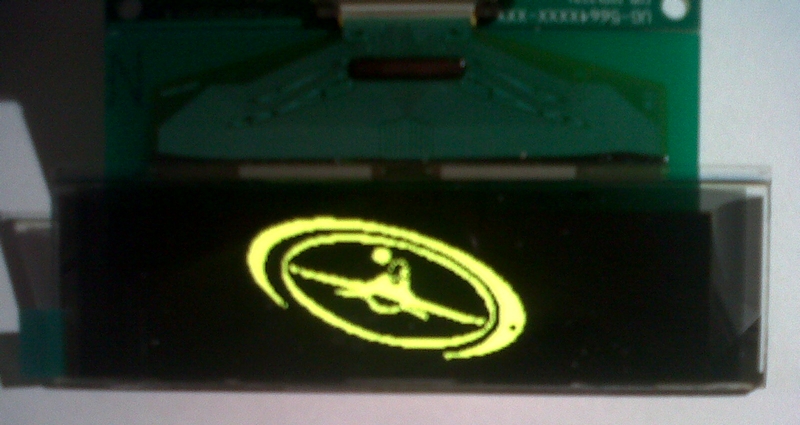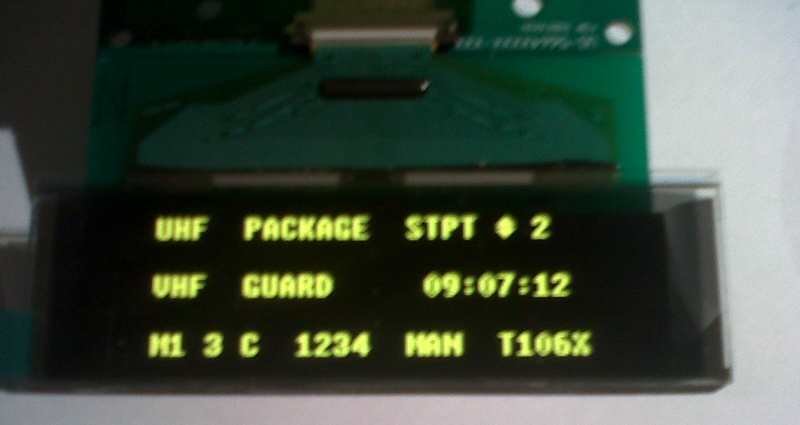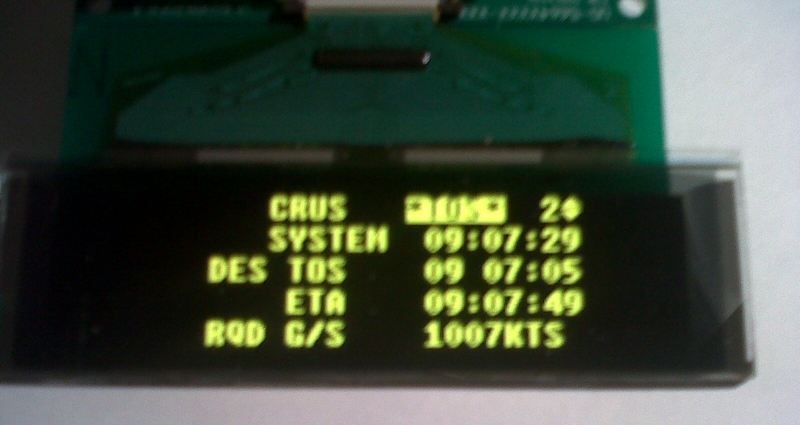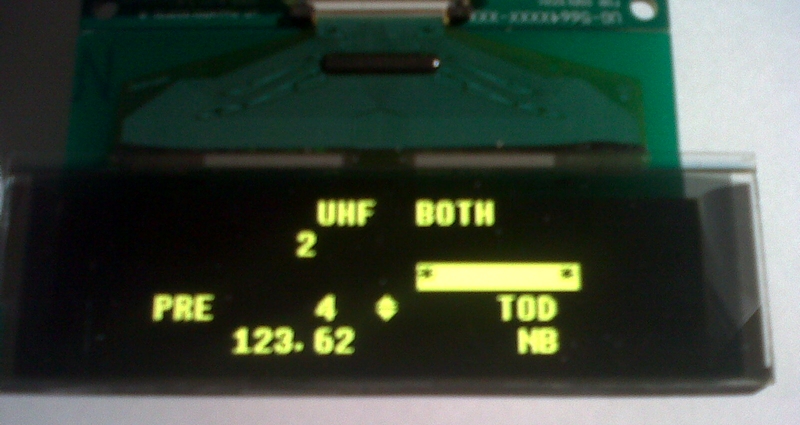I’m working on the new features of the PSCockpit software:
- A10C Model:
- F104G Model:
- Servos/PWM/Aircores scales:
Regards,
Shep
Thursday, December 26, 2013
Sunday, November 17, 2013
PSCockpit Welcomes DCS A10C Supporters!!
A10C UFC BOARD
Designed with (1) 40 I/O chip that can be connected to the digital I/O I2C channel of the PSCockpit system. It comes with corresponding elements (resistors, connectors, …) to work with 5V and a selectable mini-switch to select the desire I2C addresses.
For those of you that would like to use the Korry 318 "Caution" switch, the pcb is designed with room enough to make the cut-out of the switch and a connector to wire the switch.
Also included are the following components:
- (35) Mini switches with internal leds for pushbutton backlight. The leds are connected to the illumination circuit to allow “dimmering”.
- (21) SMD leds for lettering backlight.
- (1) frontal led
You will find the following elements in the backside:
- (1) Connector for backlight illumination.
- (1) Connector for digital I/O I2C channel,
- (1) Miniswitch to select digital I2C channel address
- (1) Connector for 5 free digital I/O of the 40 I/O board. You can use them to light the frontal led and/or to connect other switches, pushbuttons
- (1) One connector for the Korry 318 "Caution" switch
To complete the UFC you will have to add by yourself the following elements:
- UFC case
- Pushbutton covers
Please check the following dimensions for the UFC case.
You can download the file from:
http://www.mediafire.com/view/bujvl015hcd7e3q/UFCMetric.pdf
A10C CDU BOARD
Designed with (2) 40 I/O chip that can be connected to the digital I/O I2C channel of the PSCockpit system. It comes with corresponding elements (resistors, connectors, …) to work with 5V and (2) selectable mini-switch to select the desire I2C addresses.
Also included are the following components:
- (66) Mini switches with internal leds for pushbutton backlight. The leds are connected to the illumination circuit to allow “dimmering”.
- (1) frontal led
You will find the following elements in the backside:
- (2) Connectors for backlight illumination.
- (2) Connector for digital I/O I2C channel in daisy chain
- (2) Miniswitchs to select digital I2C channel addresses
- (2) Connector for 10 free digital I/O of the 40 I/O boards. You can use them to light the frontal led and/or to connect other switches, pushbuttons
To complete the CDU you will have to add by yourself the following elements:
- CDU case
- Pushbutton covers.
- CDU display
Dimensions to follow.
Regards,
Shep
Designed with (1) 40 I/O chip that can be connected to the digital I/O I2C channel of the PSCockpit system. It comes with corresponding elements (resistors, connectors, …) to work with 5V and a selectable mini-switch to select the desire I2C addresses.
For those of you that would like to use the Korry 318 "Caution" switch, the pcb is designed with room enough to make the cut-out of the switch and a connector to wire the switch.
Also included are the following components:
- (35) Mini switches with internal leds for pushbutton backlight. The leds are connected to the illumination circuit to allow “dimmering”.
- (21) SMD leds for lettering backlight.
- (1) frontal led
You will find the following elements in the backside:
- (1) Connector for backlight illumination.
- (1) Connector for digital I/O I2C channel,
- (1) Miniswitch to select digital I2C channel address
- (1) Connector for 5 free digital I/O of the 40 I/O board. You can use them to light the frontal led and/or to connect other switches, pushbuttons
- (1) One connector for the Korry 318 "Caution" switch
To complete the UFC you will have to add by yourself the following elements:
- UFC case
- Pushbutton covers
Please check the following dimensions for the UFC case.
You can download the file from:
http://www.mediafire.com/view/bujvl015hcd7e3q/UFCMetric.pdf
A10C CDU BOARD
Designed with (2) 40 I/O chip that can be connected to the digital I/O I2C channel of the PSCockpit system. It comes with corresponding elements (resistors, connectors, …) to work with 5V and (2) selectable mini-switch to select the desire I2C addresses.
Also included are the following components:
- (66) Mini switches with internal leds for pushbutton backlight. The leds are connected to the illumination circuit to allow “dimmering”.
- (1) frontal led
You will find the following elements in the backside:
- (2) Connectors for backlight illumination.
- (2) Connector for digital I/O I2C channel in daisy chain
- (2) Miniswitchs to select digital I2C channel addresses
- (2) Connector for 10 free digital I/O of the 40 I/O boards. You can use them to light the frontal led and/or to connect other switches, pushbuttons
To complete the CDU you will have to add by yourself the following elements:
- CDU case
- Pushbutton covers.
- CDU display
Dimensions to follow.
Regards,
Shep
Sunday, November 3, 2013
HOW to Use POWER_OFF Bit
When you energize your pit with the PSCockpit Sytem, some others elements, like 7 segment displays, are also turned on, so, if you enter a mission in Ramp Start the displays will be showing zeros while the cockpit in the sim isn’t still energized.
To give more reality to our pits we can now take advantage of the POWER_OFF bit of the BMS sim (thanks BMS team!!).
You can activate this function by selecting the “Use Power_OFF bit” checkbox in the F-16 Model page under Special I/Os:
By selecting this function the PSCockpit Software will do the following:
- Remove any text in the DED and PFL display
- Activate all the POWER_OFF outputs of the F-16 Model (see picture above)
- More to come….
How to use the Power_OFF outputs in 7 Seg. Displays boards
To use this functionality with the 7 seg. displays boards, you will have to define, first, one output in the IOLayout. I have selected one of the 40 I/O board that I have in the CMDS panel to use it with the 7 seg. display board of the CMDS digits:
You will have to remove the jumper of the 7 Seg. Displays board and connect one wire from the pin marked as PWM to the selected output of the 40I/O board:
The last step is to select this output as one of the Power_OFF outputs in the F16 Model page (see first picture).
By the way, this PWM input of the 7 Seg. Displays Board can be connected to a PWM output to control the brightness of the displays.
(Added on Dec., 10th)
The Power Off bits have been updated for CMDS and UHF panels.
Now, this is the way PSCockpit works with the Power_Off Bits:
a) The “Use Power_OFF bits” checkbox (number 1), when checked, allows the software to use the Power Off bits (number 2), Inverted Power Off bits (number 3), OFF CMDS (number 5) and OFF UHF (number 6).
b) Power Off outputs (number 2) will be set to HIGH when the sim is in Power Off condition and Inverted Power Off outputs (number 3) will be set to LOW when the sim is in Power Off condition and vice versa when the sim is not in Power Off condition. Some devices will need a HIGH signal and some others may need a LOW signal.
c) The Power Off condition of the sim is an internal signal. In BMS, it comes from the Shared Memory, but, as some other sims (as old versions of BMS), do not have the internal Power OFF value, you can use the function with the Power Off switch of the Elec panel (number 4). This switch must be HIGH when Power Off condition.
d) There are specific Power OFF bits for the CMDS (number 5) and UHF panels (number 6) because some others conditions have been added as below explanations.
e) Off CMDS output (number 5) will be set to HIGH (display OFF) when one of the following inputs/signal are HIGH:
- In BMS: CMDS Off (from BMS Share Memory)
- In Falcon AF: Selector Mode OFF (number 9). Also in this sim, the rest of the inputs (number 10) are used for CMDS displays
- “Invert CMDS Off Bit” checkbox (number 12), when checked, inverts the output Off CMDS.
f) Off UHF output (number 6) will be set to HIGH (display OFF) when one of the following inputs/signals are HIGH:
- Power Off (from BMS shared memory)
- UHF Selector Mode OFF (number 7)
- Selector COMM1 Off (number 8)
- All other values for UHF (number 11) are used only to use internal frequency. It is used in other sims where the frequency is not available.
Regards,
Shep
To give more reality to our pits we can now take advantage of the POWER_OFF bit of the BMS sim (thanks BMS team!!).
You can activate this function by selecting the “Use Power_OFF bit” checkbox in the F-16 Model page under Special I/Os:
- Remove any text in the DED and PFL display
- Activate all the POWER_OFF outputs of the F-16 Model (see picture above)
- More to come….
How to use the Power_OFF outputs in 7 Seg. Displays boards
To use this functionality with the 7 seg. displays boards, you will have to define, first, one output in the IOLayout. I have selected one of the 40 I/O board that I have in the CMDS panel to use it with the 7 seg. display board of the CMDS digits:
By the way, this PWM input of the 7 Seg. Displays Board can be connected to a PWM output to control the brightness of the displays.
(Added on Dec., 10th)
The Power Off bits have been updated for CMDS and UHF panels.
Now, this is the way PSCockpit works with the Power_Off Bits:
a) The “Use Power_OFF bits” checkbox (number 1), when checked, allows the software to use the Power Off bits (number 2), Inverted Power Off bits (number 3), OFF CMDS (number 5) and OFF UHF (number 6).
b) Power Off outputs (number 2) will be set to HIGH when the sim is in Power Off condition and Inverted Power Off outputs (number 3) will be set to LOW when the sim is in Power Off condition and vice versa when the sim is not in Power Off condition. Some devices will need a HIGH signal and some others may need a LOW signal.
c) The Power Off condition of the sim is an internal signal. In BMS, it comes from the Shared Memory, but, as some other sims (as old versions of BMS), do not have the internal Power OFF value, you can use the function with the Power Off switch of the Elec panel (number 4). This switch must be HIGH when Power Off condition.
d) There are specific Power OFF bits for the CMDS (number 5) and UHF panels (number 6) because some others conditions have been added as below explanations.
e) Off CMDS output (number 5) will be set to HIGH (display OFF) when one of the following inputs/signal are HIGH:
- In BMS: CMDS Off (from BMS Share Memory)
- In Falcon AF: Selector Mode OFF (number 9). Also in this sim, the rest of the inputs (number 10) are used for CMDS displays
- “Invert CMDS Off Bit” checkbox (number 12), when checked, inverts the output Off CMDS.
f) Off UHF output (number 6) will be set to HIGH (display OFF) when one of the following inputs/signals are HIGH:
- Power Off (from BMS shared memory)
- UHF Selector Mode OFF (number 7)
- Selector COMM1 Off (number 8)
- All other values for UHF (number 11) are used only to use internal frequency. It is used in other sims where the frequency is not available.
Regards,
Shep
Friday, October 25, 2013
HOW to VIBRATORS/BASS SHAKERS
The PSCockpit Software is able to drive up to 6 vibration motors with 4 different speeds and/or send .wav files to your bass shaker within your favourite sim.
Vibration motors
The vibration motors are driven by means of 6 on/off signals and 4 speed signals. With this configuration you can use the vibration motor pcb.
To configure the vibration motors in the PSCockpit Software go to IOLayout and select Leds as ouputs. You will have to define the following outputs:
- (4) for speed signals
- (1) for general ON signal
- (x) for the individual ON/OFF motor signals
You can test your outputs, as usual, by clicking on “Test” command and activating the proper checkbox.
Now that we have defined the outputs, we have to tell the PSCockpit Software the function of each output. This is done in the “F16 Model” page, under the tab “Vibrators”. Just select in each position the correct Id of the output previously introduced:
The next step is to select the behaviour of the vibrator motors depending on the variables of the sim. To do this go to “Vibs Effects” from this page or from the Main Page of the PSCockpit Software. The following screen will be opened:
The actual variables of the sim that can be programmed are the following:
- Air brakes: becomes active when the airbrakes are deployed
- Afterburner: becomes active when the afterburner is reached
- Rolling: becomes active when you are on the ground
- Motor rpm: self explanatory.
- Fire Cannon: becomes active when you push fire cannon button of your joystick.
- Fire Missile: becomes active when you push fire missile button of your joystick.
- Landing Gear: becomes active while the landing gear is in extension/retraction movement.
Select in each checkbox what motors you would like to activate when a sim variable becomes active.
To define the pulse intensity you can define the following variables:
Type:
- Fixed: The pulse intensity is always the same.
- Progressive: The pulse intensity begins from Min. to Max. defined later
- Center peak: The pulse reaches the highest intensity in the middle of Min. and Max.
Force. If you have selected a fixed type, you can establish the force level:
- Off: No motor will be activated
- Slight: Speed 0 will be activated.
- Rumble: Speed 1 will be activated.
- Medium: Speed 2 will be activated.
- Hard: Speed 3 will be activated.
Magnitude: If you have selected a Center Peak or Progressive type, you can select one of the following sim varables:
- RMP%
- Speed
- RMPxSpeed
- Nozzle Pos
- Fuel Flow
Min. and Max: The values of these variables should match the selected magnitude variable and also will define the interval when the motors will be active.
Depending on all the above values the software will determine what motor speed output will be activated.
To assign the joystick buttons for cannon and missile fire go to “Joystick” page and assign the desire buttons:
Two examples:
- I would like to feel the runaway while taking off or landing, so I have selected the Rolling variable to activate all the vibrators in a progressive manner, depending on the speed from 20 to 200 knots. In this way as the speed on the runaways increases the vibration increase and will stop when the speed reaches 200 knots which will be when the wheels leave the runaway.
- While on Ramp Start, I would like to feel how the motor begins to turn, so I have selected the Motor RPM to activate all the vibrators in a center peak manner, depending on RPM% from 10 to 60% rpm. In this way, when I push on the Start 1 switch, the vibrators will begin in slight mode and when I move the throttle forward I will feel how the vibration increases up to 30% rpm and will decrease until 60% when it supposed the motor reaches the nominal rpm. Just like starting the motor of you car!
I have to tell you that these effects are simply amazing!!
Wave files
The way the wave files are treated is the same as the vibrator motors but the software changes the volume of the sound.
To select a wave file put the cursor in the desire text box and click on the Open File icon. Then select the .wav file. They must be saved on your PSCockpit directory.
To test a .wav file, put the cursor on the desired text box and click on the Play icon.
You can change the volume and the frequency of the .wav file to adjust anyhow your bass shaker. The PSCockpit software will change the volume from this selected volume.
If you have more than one Audio device you can select in which one the .wav will be sent to by selecting the correct one in the display list “Audio Device”.
Be aware that in a PC the back and front sound outputs are handled by the same audio device, but you can use your back/front sound output for bass shakers and have a USB headphones for team speak.
Regards,
Shep
Vibration motors
The vibration motors are driven by means of 6 on/off signals and 4 speed signals. With this configuration you can use the vibration motor pcb.
To configure the vibration motors in the PSCockpit Software go to IOLayout and select Leds as ouputs. You will have to define the following outputs:
- (4) for speed signals
- (1) for general ON signal
- (x) for the individual ON/OFF motor signals
You can test your outputs, as usual, by clicking on “Test” command and activating the proper checkbox.
Now that we have defined the outputs, we have to tell the PSCockpit Software the function of each output. This is done in the “F16 Model” page, under the tab “Vibrators”. Just select in each position the correct Id of the output previously introduced:
The next step is to select the behaviour of the vibrator motors depending on the variables of the sim. To do this go to “Vibs Effects” from this page or from the Main Page of the PSCockpit Software. The following screen will be opened:
The actual variables of the sim that can be programmed are the following:
- Air brakes: becomes active when the airbrakes are deployed
- Afterburner: becomes active when the afterburner is reached
- Rolling: becomes active when you are on the ground
- Motor rpm: self explanatory.
- Fire Cannon: becomes active when you push fire cannon button of your joystick.
- Fire Missile: becomes active when you push fire missile button of your joystick.
- Landing Gear: becomes active while the landing gear is in extension/retraction movement.
Select in each checkbox what motors you would like to activate when a sim variable becomes active.
To define the pulse intensity you can define the following variables:
Type:
- Fixed: The pulse intensity is always the same.
- Progressive: The pulse intensity begins from Min. to Max. defined later
- Center peak: The pulse reaches the highest intensity in the middle of Min. and Max.
Force. If you have selected a fixed type, you can establish the force level:
- Off: No motor will be activated
- Slight: Speed 0 will be activated.
- Rumble: Speed 1 will be activated.
- Medium: Speed 2 will be activated.
- Hard: Speed 3 will be activated.
Magnitude: If you have selected a Center Peak or Progressive type, you can select one of the following sim varables:
- RMP%
- Speed
- RMPxSpeed
- Nozzle Pos
- Fuel Flow
Min. and Max: The values of these variables should match the selected magnitude variable and also will define the interval when the motors will be active.
Depending on all the above values the software will determine what motor speed output will be activated.
To assign the joystick buttons for cannon and missile fire go to “Joystick” page and assign the desire buttons:
Two examples:
- I would like to feel the runaway while taking off or landing, so I have selected the Rolling variable to activate all the vibrators in a progressive manner, depending on the speed from 20 to 200 knots. In this way as the speed on the runaways increases the vibration increase and will stop when the speed reaches 200 knots which will be when the wheels leave the runaway.
- While on Ramp Start, I would like to feel how the motor begins to turn, so I have selected the Motor RPM to activate all the vibrators in a center peak manner, depending on RPM% from 10 to 60% rpm. In this way, when I push on the Start 1 switch, the vibrators will begin in slight mode and when I move the throttle forward I will feel how the vibration increases up to 30% rpm and will decrease until 60% when it supposed the motor reaches the nominal rpm. Just like starting the motor of you car!
I have to tell you that these effects are simply amazing!!

Wave files
The way the wave files are treated is the same as the vibrator motors but the software changes the volume of the sound.
To select a wave file put the cursor in the desire text box and click on the Open File icon. Then select the .wav file. They must be saved on your PSCockpit directory.
To test a .wav file, put the cursor on the desired text box and click on the Play icon.
You can change the volume and the frequency of the .wav file to adjust anyhow your bass shaker. The PSCockpit software will change the volume from this selected volume.
If you have more than one Audio device you can select in which one the .wav will be sent to by selecting the correct one in the display list “Audio Device”.
Be aware that in a PC the back and front sound outputs are handled by the same audio device, but you can use your back/front sound output for bass shakers and have a USB headphones for team speak.
Regards,
Shep
Thursday, October 24, 2013
AIRCORES PCBs
More information about the aircore pcbs.
I have selected the chip MLX10407 from Melexis to drive the aircores. In fact, it is the only one with serial protocol I found in the electronic store. This chip is able to drive two 360º aircores and three 90º actuators, although these ones will be useless for our pits, maybe they can be used for roll trim and pitch trim indicators or maybe other instruments by means of a gear.
With this chip I have developed the Aircore Controller pcb.
To hold the aircore you can use your own board or the new Aircore PCB wich will fit in a 40x40 mm instrument. The Aircore Controller pcb can be attached at the bottom side of the Aircore board without any extra wiring by means of two connectors.
You can see both here:
You can, then, wire the second aircore from the Aircore Controller pcb.
To drive the Aircore Controller you will also need the I2CtoSPI pcb. This board is able to drive up to 4 SPI devices and, apart of the aircores, can be used in the future to drive other SPI devices like, for example, the OLED display:
In this way, PSCockpit software will be able to drive up to 8 I2CtoSPI boards, which mean 34 Aircore controllers, which mean 68 (360º) aircores and 102 (90º) actuators.
In summary, for the engine instruments (OIL, NOZ POS, RPM and FTIT) you will need one I2CtoSPI board and two Aircore Controller pcbs for full 360º aircores.
Hope you like it!!
More info about the ICP board to come.
Regards,
Shep
I have selected the chip MLX10407 from Melexis to drive the aircores. In fact, it is the only one with serial protocol I found in the electronic store. This chip is able to drive two 360º aircores and three 90º actuators, although these ones will be useless for our pits, maybe they can be used for roll trim and pitch trim indicators or maybe other instruments by means of a gear.
With this chip I have developed the Aircore Controller pcb.
To hold the aircore you can use your own board or the new Aircore PCB wich will fit in a 40x40 mm instrument. The Aircore Controller pcb can be attached at the bottom side of the Aircore board without any extra wiring by means of two connectors.
You can see both here:
You can, then, wire the second aircore from the Aircore Controller pcb.
To drive the Aircore Controller you will also need the I2CtoSPI pcb. This board is able to drive up to 4 SPI devices and, apart of the aircores, can be used in the future to drive other SPI devices like, for example, the OLED display:
In this way, PSCockpit software will be able to drive up to 8 I2CtoSPI boards, which mean 34 Aircore controllers, which mean 68 (360º) aircores and 102 (90º) actuators.
In summary, for the engine instruments (OIL, NOZ POS, RPM and FTIT) you will need one I2CtoSPI board and two Aircore Controller pcbs for full 360º aircores.
Hope you like it!!
More info about the ICP board to come.
Regards,
Shep
Monday, October 21, 2013
PSCOCKPIT SYSTEM 3rd RUN!
PSCockit System keeps growing with new additional boards:
- ICP pcb
- Adafruit 16 servo controller
- Simco Aircores pcbs
- Vibration motors pcb
- I/O Enhancement pcb
Now, time to launch a third run!!!!
Description
For people who don’t know the system, the PSCockpit system has been developed with the following objectives:
- One stop hardware and software for cockpit systems. Once the cockpit is connected you can configure the software individually for each sim.
- Easy configuration and setup for people with out electronic knowledge.
- Avoid excessive wiring runs along the cockpit: The system uses small satellite PCB’s that can be distributed along the cockpit. The communication between these satellite PCB’s and the Main PCB is done with only 2 wires (I2C protocol) plus the power cables. These wires can be connected in daisy chain. The idea is to wire each of the cockpit panels to only one satellite PCB.
GUIDES:
For more information about the system, please look at the following links:
- PSCockpit first run post: http://viperpits.org/smf/index.php?topic=7237.0
- PSCockpit second run post: http://www.viperpits.org/smf/index.php?topic=8679.0
- PSCockpit Quick Guide V2: http://www.mediafire.com/view/o7k6hvkt0y671iq/QuickGuideV2.pdf
- PSCockpit distribution example: http://www.mediafire.com/download.php?crkrwvt9csg92ri
- All "How to's" in a row at http://psfalcon.blogspot.com.es/search/label/PS%20Cockpit%20PCB%20System
SOFTWARE DOWNLOAD:
- PSCockpit Software Installation: http://www.mediafire.com/download.php?d80terg9airfhd2
- PSCockpit Softwate update v.0.9.3:
http://www.mediafire.com/download/mb5muokuzubct2v/PSCockpit093.rar
To install de update just copy the files to the installation directory.
Prices
The prices of the PCB’s already mounted and tested are the following:
- Main PCB: 60 €
- Digital expander for 40 inputs/outputs: 33 €
- Digital expander 16 inputs/outputs: 10 €
- Steppers/Other voltage outputs pcb: 28 €
- 7 segment displays pcb for 6 displays: 18 €
- Analogue pcb for 4 inputs/ 1 output: 20 €
- Yellow OLED display (85mm x 40mm), 256x64 for DED: 55 €
- ICP pcb: 60€
- I2CtoSPI pcb: 25€
- Aircore Controller pcb: 24€
- Aircore pcb: 15€
- Vibration Motors pcb: 38€
- I/O Enhancement pcb: 6,5€
- Shipments: 15€ / 25€ depending on the total weight order
More information about latest PCBs to follow!!
Time Line
- Orders will be accepted until Nov. 4th.
- Only direct bank transfers will be accepted. Sorry for the inconvenience.
- Delivery: December and January.
Regards,
Shep
- ICP pcb
- Adafruit 16 servo controller
- Simco Aircores pcbs
- Vibration motors pcb
- I/O Enhancement pcb
Now, time to launch a third run!!!!
Description
For people who don’t know the system, the PSCockpit system has been developed with the following objectives:
- One stop hardware and software for cockpit systems. Once the cockpit is connected you can configure the software individually for each sim.
- Easy configuration and setup for people with out electronic knowledge.
- Avoid excessive wiring runs along the cockpit: The system uses small satellite PCB’s that can be distributed along the cockpit. The communication between these satellite PCB’s and the Main PCB is done with only 2 wires (I2C protocol) plus the power cables. These wires can be connected in daisy chain. The idea is to wire each of the cockpit panels to only one satellite PCB.
GUIDES:
For more information about the system, please look at the following links:
- PSCockpit first run post: http://viperpits.org/smf/index.php?topic=7237.0
- PSCockpit second run post: http://www.viperpits.org/smf/index.php?topic=8679.0
- PSCockpit Quick Guide V2: http://www.mediafire.com/view/o7k6hvkt0y671iq/QuickGuideV2.pdf
- PSCockpit distribution example: http://www.mediafire.com/download.php?crkrwvt9csg92ri
- All "How to's" in a row at http://psfalcon.blogspot.com.es/search/label/PS%20Cockpit%20PCB%20System
SOFTWARE DOWNLOAD:
- PSCockpit Software Installation: http://www.mediafire.com/download.php?d80terg9airfhd2
- PSCockpit Softwate update v.0.9.3:
http://www.mediafire.com/download/mb5muokuzubct2v/PSCockpit093.rar
To install de update just copy the files to the installation directory.
Prices
The prices of the PCB’s already mounted and tested are the following:
- Main PCB: 60 €
- Digital expander for 40 inputs/outputs: 33 €
- Digital expander 16 inputs/outputs: 10 €
- Steppers/Other voltage outputs pcb: 28 €
- 7 segment displays pcb for 6 displays: 18 €
- Analogue pcb for 4 inputs/ 1 output: 20 €
- Yellow OLED display (85mm x 40mm), 256x64 for DED: 55 €
- ICP pcb: 60€
- I2CtoSPI pcb: 25€
- Aircore Controller pcb: 24€
- Aircore pcb: 15€
- Vibration Motors pcb: 38€
- I/O Enhancement pcb: 6,5€
- Shipments: 15€ / 25€ depending on the total weight order
More information about latest PCBs to follow!!
Time Line
- Orders will be accepted until Nov. 4th.
- Only direct bank transfers will be accepted. Sorry for the inconvenience.
- Delivery: December and January.
Regards,
Shep
Tuesday, August 13, 2013
PS Keys v.2.0
You can download new version of PSKeys as per Dunc recommendations here:
PSKeys v.2.0 Setup
Thanks Dunc!!
Regards,
Shep
PSKeys v.2.0 Setup
Thanks Dunc!!
Regards,
Shep
Monday, July 8, 2013
HOW TO Assign Commands Directly From your BMS .key File
Now you can assign commands to your hardware directly from your BMS .key file in the PSCockpit Software v.0.9.1.
To do this, go to Command Page and select “BMS .key file” from the Keyboard menu. Click on Load to open your BMS .key file and you will see the list of all the callbacks already assigned. When you click on one of them, the software will read and display the key combination. To assign it to one of your switches, pushbuttons, etc, just click on Replace.
Edited on April 10th, 2016
------------------------------------------------------------------------------------------------------------------------
From version 0.9.9 you can also assign commands from a drop down list directly in the element matrix by clicking on it with the right button of the mouse once you have loaded the .key file:
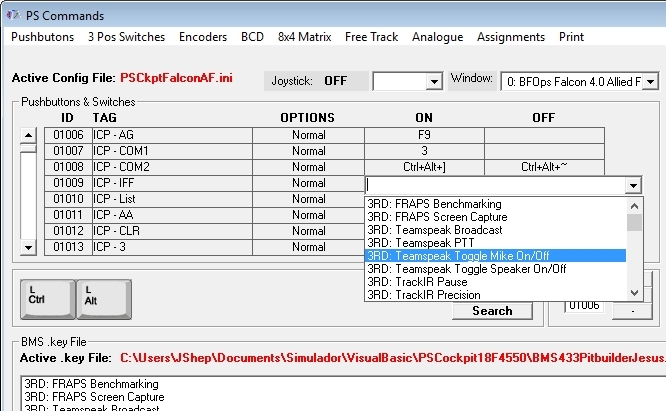
------------------------------------------------------------------------------------------------------------------------
Regards,
Shep
To do this, go to Command Page and select “BMS .key file” from the Keyboard menu. Click on Load to open your BMS .key file and you will see the list of all the callbacks already assigned. When you click on one of them, the software will read and display the key combination. To assign it to one of your switches, pushbuttons, etc, just click on Replace.
Edited on April 10th, 2016
------------------------------------------------------------------------------------------------------------------------
From version 0.9.9 you can also assign commands from a drop down list directly in the element matrix by clicking on it with the right button of the mouse once you have loaded the .key file:

------------------------------------------------------------------------------------------------------------------------
Regards,
Shep
Saturday, June 29, 2013
HOW TO use Adafruit 16-Channel Servo Driver with the PS Cockpit System
Now the PSCockpit System can drive the Adafruit 16-Channel Servo Driver:
For more information, check http://www.adafruit.com/products/815
You have to consider the following details:
- The Adafruit board is non compatible with the SSC-32 board for servos. You can only use only one of the system at once.
- Only 2 Adafruit boards can be connected to the PSCockpit System.
- Adafruit boards have to be connected only to the Main I2C Channel of the Main Board.
- The firmware of the Main Board has to be updated to version 1.4.0
- PSCockpit software must be version 0.9.1 or higher
- I2C address of the Adafruit board has to be selected with the 3 less significant digits, the other 3 must remain open:
The wiring is as follows:
Main Board Main I2C Channnel ---> Adafruit
5V+ ---> VCC
GND ---> GND
SCD ---> SDA
SCL ---> SCL
To power the servos use the terminal block of the Adafruit board.
Read carefully the Adafruit datasheet for assembly, adding a capacitor and other things.
Configuring the Adafruit board
To configure the system we have to add the Adafruit board. Open the IO Layout page of the PSCockpit software and select PWM-PCA9685 on the expander dropdown list of the Main I2C channel. You will see the list of PWM outputs available for the Adafruit boards. In the tag section you can put the name of each device:
Note: Adafruit board can only be used on the Main Channel.
Once you have attached the Adafruit board to the Main I2C Channel you can click “Detect”. This action will detect and configure the Adafruit board. If everything is correct the PWM-PCA9685 expander will appear in pink.
To select the Adafruit board to be used instead of the SSC-32 for servos, go to F16Model and select Servos/PWM page. You will see “Use PWM-PCA9685” checkbox. Once you check it, the servo channels dropdown list will be filled with the tags configured in the IOLayout:
To configure and to add scales, see steps 6 and 7 in the following post: How to use Aircores
Regards,
Shep
For more information, check http://www.adafruit.com/products/815
You have to consider the following details:
- The Adafruit board is non compatible with the SSC-32 board for servos. You can only use only one of the system at once.
- Only 2 Adafruit boards can be connected to the PSCockpit System.
- Adafruit boards have to be connected only to the Main I2C Channel of the Main Board.
- The firmware of the Main Board has to be updated to version 1.4.0
- PSCockpit software must be version 0.9.1 or higher
- I2C address of the Adafruit board has to be selected with the 3 less significant digits, the other 3 must remain open:
The wiring is as follows:
Main Board Main I2C Channnel ---> Adafruit
5V+ ---> VCC
GND ---> GND
SCD ---> SDA
SCL ---> SCL
To power the servos use the terminal block of the Adafruit board.
Read carefully the Adafruit datasheet for assembly, adding a capacitor and other things.
Configuring the Adafruit board
To configure the system we have to add the Adafruit board. Open the IO Layout page of the PSCockpit software and select PWM-PCA9685 on the expander dropdown list of the Main I2C channel. You will see the list of PWM outputs available for the Adafruit boards. In the tag section you can put the name of each device:
Note: Adafruit board can only be used on the Main Channel.
Once you have attached the Adafruit board to the Main I2C Channel you can click “Detect”. This action will detect and configure the Adafruit board. If everything is correct the PWM-PCA9685 expander will appear in pink.
To select the Adafruit board to be used instead of the SSC-32 for servos, go to F16Model and select Servos/PWM page. You will see “Use PWM-PCA9685” checkbox. Once you check it, the servo channels dropdown list will be filled with the tags configured in the IOLayout:
To configure and to add scales, see steps 6 and 7 in the following post: How to use Aircores
Regards,
Shep
Wednesday, April 10, 2013
HOW TO Connect and Configure your OLED 256x64 display
Edited on Aug, 17th, 2022:
-------------------------------------------------------------------------------------------------------------------------
For 11th Run displays see this post: v2 OLED display
-------------------------------------------------------------------------------------------------------------------------
The OLED display is supplied with a driver board attached to the display pcb. This driver board has a voltage regulator to convert the 5V to 3,3V, which supply power to the OLED display and two signal converters to convert 5V signals coming from the Main Pcb to 3,3V signals going to the display.
The OLED is configured to be used as 6800 Parallel 8 bit interface.
Before connecting the OLED display turn off the power supply of the Main Pcb and detach the USB cable from the computer.
Edited on Feb, 18th, 2014:
------------------------------------------------------------------------------------------------------------------------
Make a cable with 20 wire and connect straight pin to pin:
Be sure you have firmware version 1.5.0 or higher (1.5.1 recommended) in the Main PCB. You can see your firmware version by clicking on Help/About in the PSCockpit Software)
Make a cable with 14 wires and connect it from pin DBO to E.
Power the board directly from the power supply separately from the signals cable with SWG24 wires (thicker that the normal paralel strips used in PC connections).
------------------------------------------------------------------------------------------------------------------------
Not all the wires/pins are used for this display. If you want to make a cable with less wires, these are the pins used: +5V, GND, DB0, DB1, DB2, DB3, DB4, DB5, DB6, DB7, RST, R/W, Rs, and E.
Turn on power and connect the USB cable to your computer.
Run PSCockpit software and go to the LCD page and select the OLED display on the drop down list in the corresponding LCD tab. LCD 1 is used for the LCD connected to the most external connector of the Main Pcb and LCD 2 for the inner connector:
Don’t forget to check “Enable” and the “DED” or “PFL” to use with our sim and the desire brightness of the display with the slider bar.
In “Test” area you have some usual commands for you to try. They are self explanatory.
This display accepts 3 bytes commands. Select the corresponding option button above the commands text box to send one, two or three bytes.
You can also send monochrome bitmaps to the OLED but the horizontal length of the bitmap has to be multiple of 4.
NOTES:
* The OLED display is activated only when you enter PSCockpit software and is deactivated when you exit the program. This is to avoid image persistence on the OLED.
* The OLED display may be light sensitive. Caution should be taken to avoid exposure of this device to any light source during normal operation.
* The OLED display is not radiation protected.
Some pictures of the running OLED display:
Kind regards,
Shep
The OLED is configured to be used as 6800 Parallel 8 bit interface.
Before connecting the OLED display turn off the power supply of the Main Pcb and detach the USB cable from the computer.
Edited on Feb, 18th, 2014:
------------------------------------------------------------------------------------------------------------------------
Be sure you have firmware version 1.5.0 or higher (1.5.1 recommended) in the Main PCB. You can see your firmware version by clicking on Help/About in the PSCockpit Software)
Make a cable with 14 wires and connect it from pin DBO to E.
Power the board directly from the power supply separately from the signals cable with SWG24 wires (thicker that the normal paralel strips used in PC connections).
------------------------------------------------------------------------------------------------------------------------
Turn on power and connect the USB cable to your computer.
Run PSCockpit software and go to the LCD page and select the OLED display on the drop down list in the corresponding LCD tab. LCD 1 is used for the LCD connected to the most external connector of the Main Pcb and LCD 2 for the inner connector:
Don’t forget to check “Enable” and the “DED” or “PFL” to use with our sim and the desire brightness of the display with the slider bar.
In “Test” area you have some usual commands for you to try. They are self explanatory.
This display accepts 3 bytes commands. Select the corresponding option button above the commands text box to send one, two or three bytes.
You can also send monochrome bitmaps to the OLED but the horizontal length of the bitmap has to be multiple of 4.
NOTES:
* The OLED display is activated only when you enter PSCockpit software and is deactivated when you exit the program. This is to avoid image persistence on the OLED.
* The OLED display may be light sensitive. Caution should be taken to avoid exposure of this device to any light source during normal operation.
* The OLED display is not radiation protected.
Some pictures of the running OLED display:
Kind regards,
Shep
Monday, March 11, 2013
HOW TO Install your 256x64 OLED Display into the DED box
The box I have selected is from Hammond Manufacturing, part number 1598ABK. It comes with two detachable front and rear aluminium plates:
To fit the display into the box we have to disassemble the OLED display, make some modifications of the OLED pcb and make some adjustment in the box.
Please follow the follow the steps carefully:
1. Unbend the 4 little flanges of the aluminium frame of the OLED display
2. Detach the aluminium frame from the pcb and then detach the crystal from the aluminium frame by pressing carefully the crystal from both ends. There is also a plastic protector attached to the crystal and frame. Remove it from the frame and stick it again to the OLED crystal:
3. Remove the crystal ribbon from the pcb by gently pushing out the two flanges of the connector:
4. Now, if you try to insert the crystal into the front groove of the box, you will notice that the crystal doesn’t enter smoothly. The groove of the box has to be enlarged a little with a cutter. Also the little strips of the internal face of the box have to be removed. The modifications of the grooves have to be done in both parts of the box while the strips can be removed in only one part of the box.
5. Now the crystal can be inserted in the box:
6. To allow the OLED display pcb get inside the box, cut the bottom side of the PCB wich has no copper nor elements and reduce a little the sides of the pcb with the sandpaper:
7. Attach again the crystal to the pcb. The little chip of the ribbon has to be on top:
8. Place the crystal and the pcb in the box:
9. Close the box carefully with the top part:
You can even reuse the aluminium frame with some modification:
Coming soon……. connecting the OLED display.
Kind regards,
Shep
To fit the display into the box we have to disassemble the OLED display, make some modifications of the OLED pcb and make some adjustment in the box.
Please follow the follow the steps carefully:
1. Unbend the 4 little flanges of the aluminium frame of the OLED display
2. Detach the aluminium frame from the pcb and then detach the crystal from the aluminium frame by pressing carefully the crystal from both ends. There is also a plastic protector attached to the crystal and frame. Remove it from the frame and stick it again to the OLED crystal:
3. Remove the crystal ribbon from the pcb by gently pushing out the two flanges of the connector:
4. Now, if you try to insert the crystal into the front groove of the box, you will notice that the crystal doesn’t enter smoothly. The groove of the box has to be enlarged a little with a cutter. Also the little strips of the internal face of the box have to be removed. The modifications of the grooves have to be done in both parts of the box while the strips can be removed in only one part of the box.
5. Now the crystal can be inserted in the box:
6. To allow the OLED display pcb get inside the box, cut the bottom side of the PCB wich has no copper nor elements and reduce a little the sides of the pcb with the sandpaper:
7. Attach again the crystal to the pcb. The little chip of the ribbon has to be on top:
8. Place the crystal and the pcb in the box:
9. Close the box carefully with the top part:
You can even reuse the aluminium frame with some modification:
Coming soon……. connecting the OLED display.

Kind regards,
Shep
Wednesday, February 6, 2013
New Encoder Interface Option of the PSCockpit System
As explained before, you can connect incremental encoders to the PSCockpit System to emulate some rotaries of the real cockpit. The digital signals coming from the encoders are checked every PSCockpit Software cycle time. This means that if you move too fast the encoder or you have encoders with more than 12 signals of resolution; the software is not able to catch up the electric signals thus the commands sent to the sim may not be accurate or slow.
To resolve this problem, now you can use the encoders as if they were a single pushbutton: in one rotational direction, sending a selected command to the sim and sending a different command in the reverse rotational direction by holding a desired pushbutton of your joystick:
To do this, first, with your favourite Joystick connected, go to the Joystick Page of the PSCockpit Software, select the device in the “Joystick device number” dropdown list and click on the corresponding “Assign” button. Now, press the joystick button you want to be assigned. In example, I have assigned the Joystick button 1 to the PSCockpit JB1:
Go to the Commands page of the PSCockpit Software and select the “Encoders” tab. Select “Pulse” function in the HDG encoder and assign the desired key combination:
Now, press the joystick button or select the JB1 from the dropdown list “Joystick” and assign the key combination to the ACW Turn field:
Remember: in the PSCockpit System you can program 3 joystick buttons and assign a different key combination for each button. This can be made in all the inputs elements connected to the PSCockpit boards. Also you can define at what window you want to send that command in the “Window” dropdown list.
Kind regards,
Shep
To resolve this problem, now you can use the encoders as if they were a single pushbutton: in one rotational direction, sending a selected command to the sim and sending a different command in the reverse rotational direction by holding a desired pushbutton of your joystick:
To do this, first, with your favourite Joystick connected, go to the Joystick Page of the PSCockpit Software, select the device in the “Joystick device number” dropdown list and click on the corresponding “Assign” button. Now, press the joystick button you want to be assigned. In example, I have assigned the Joystick button 1 to the PSCockpit JB1:
Go to the Commands page of the PSCockpit Software and select the “Encoders” tab. Select “Pulse” function in the HDG encoder and assign the desired key combination:
Now, press the joystick button or select the JB1 from the dropdown list “Joystick” and assign the key combination to the ACW Turn field:
Remember: in the PSCockpit System you can program 3 joystick buttons and assign a different key combination for each button. This can be made in all the inputs elements connected to the PSCockpit boards. Also you can define at what window you want to send that command in the “Window” dropdown list.
Kind regards,
Shep
Thursday, January 24, 2013
OLED Display for PSCockpit System
Subscribe to:
Comments (Atom)

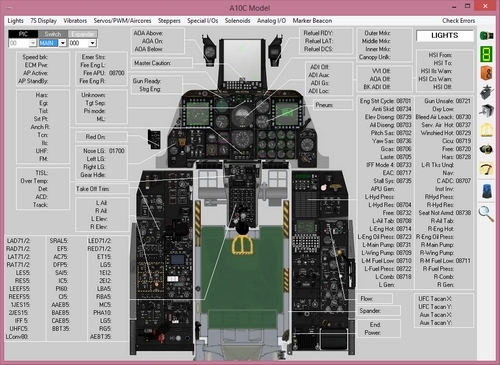
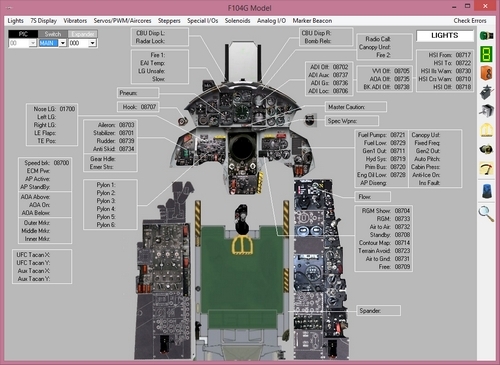
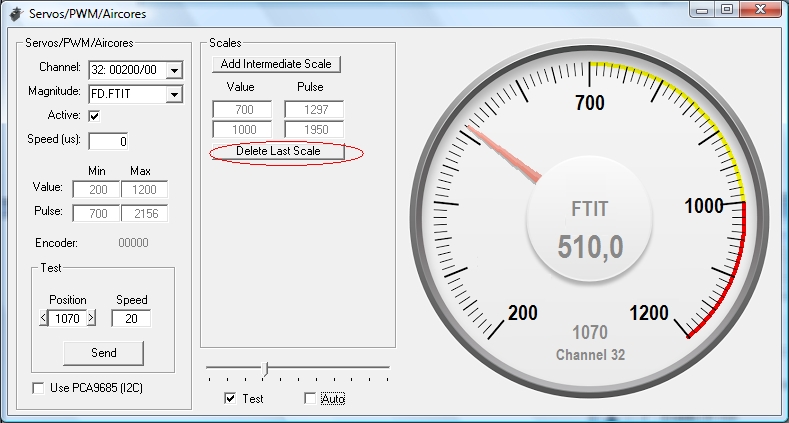



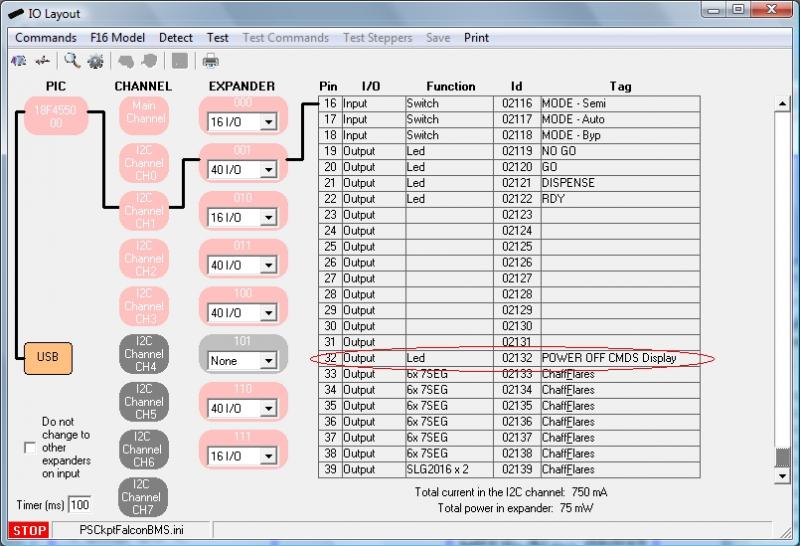
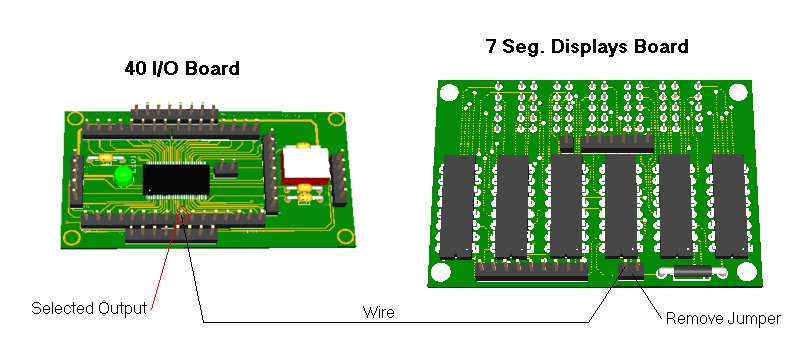
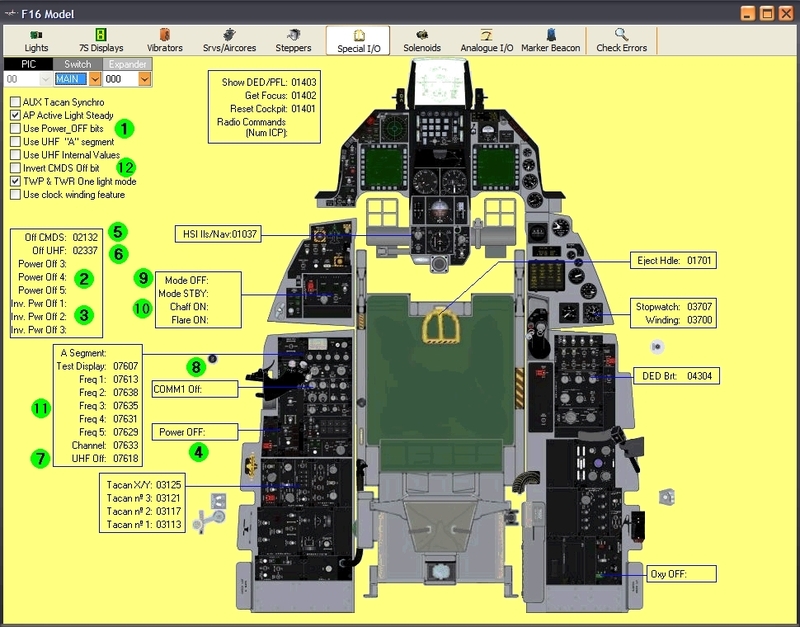

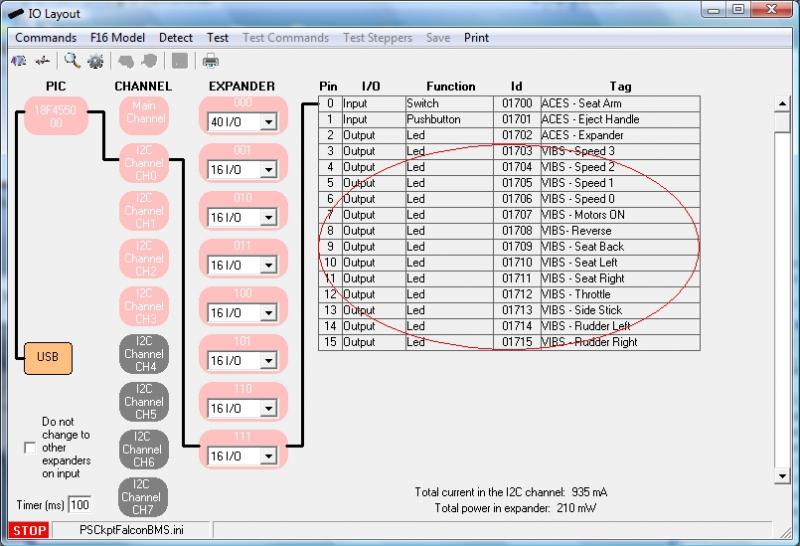
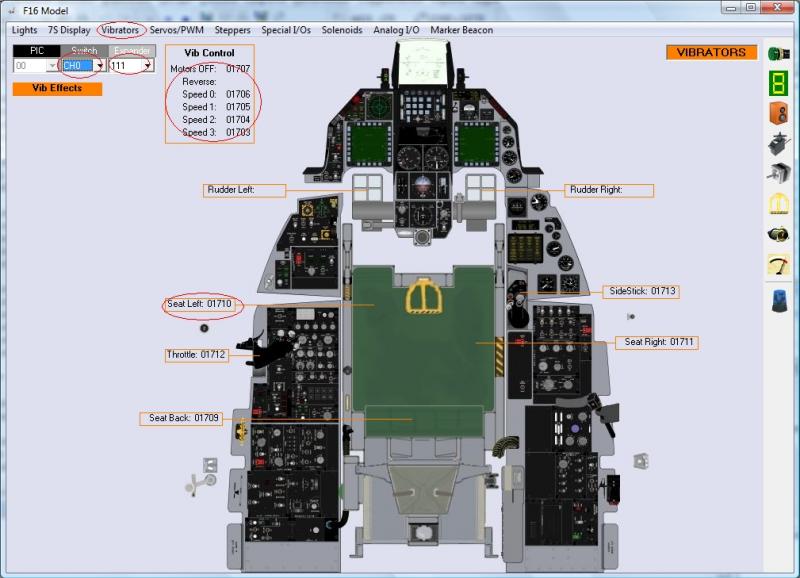

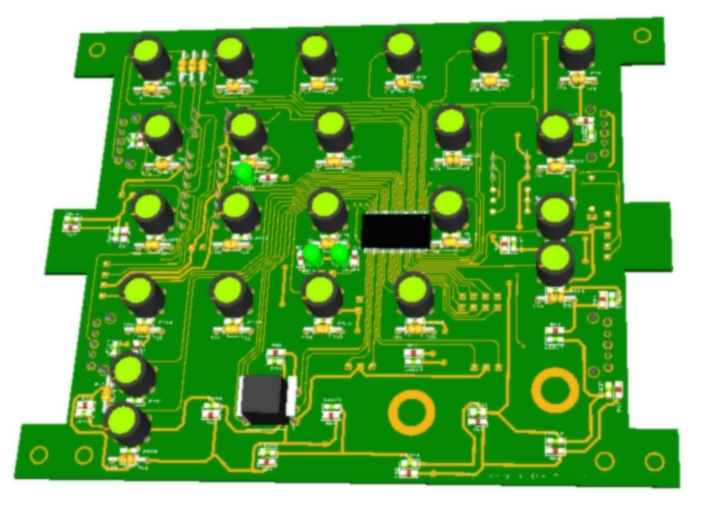
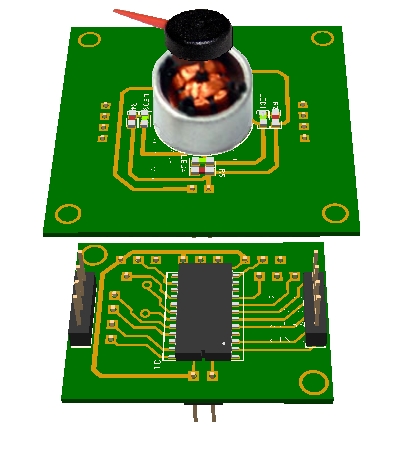
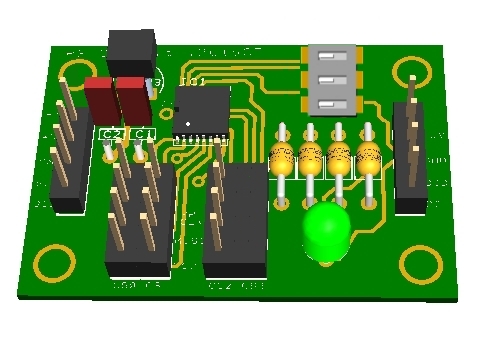
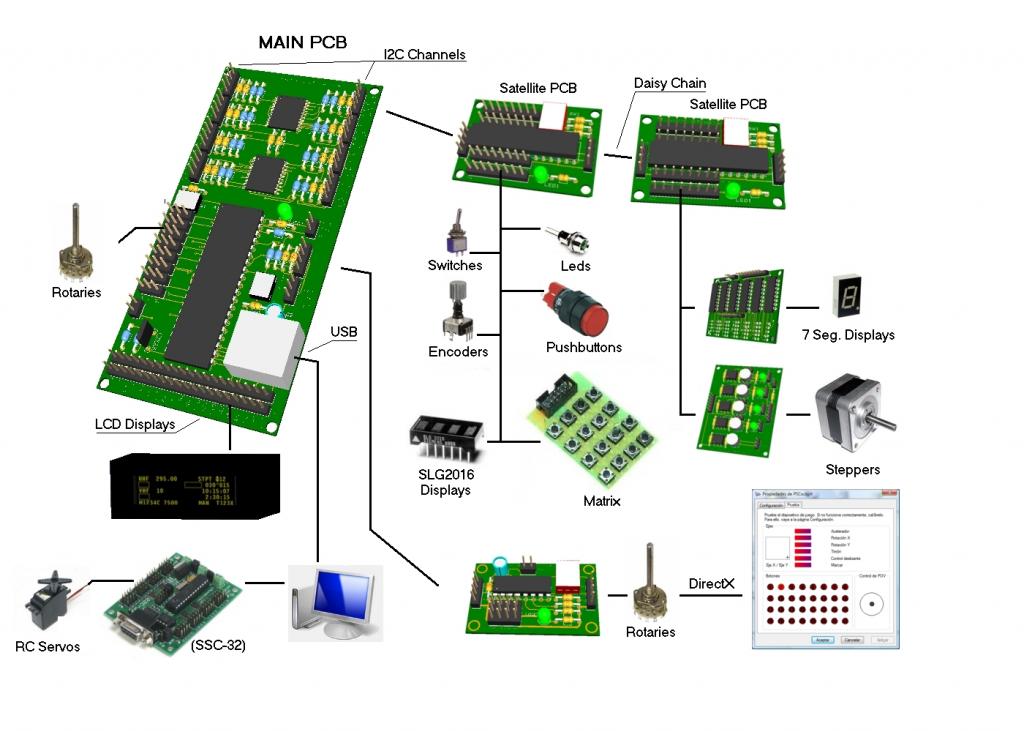

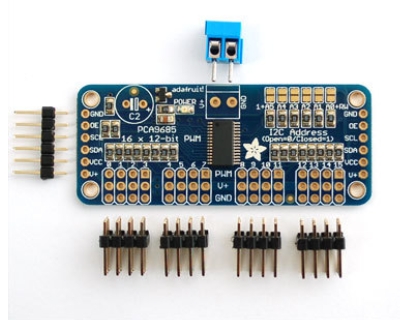
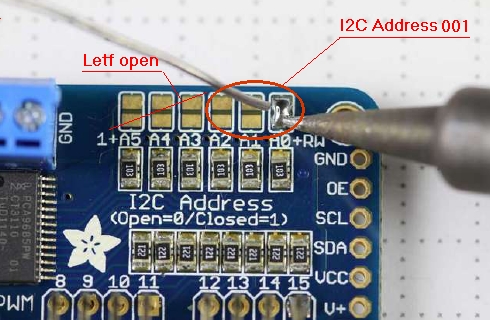
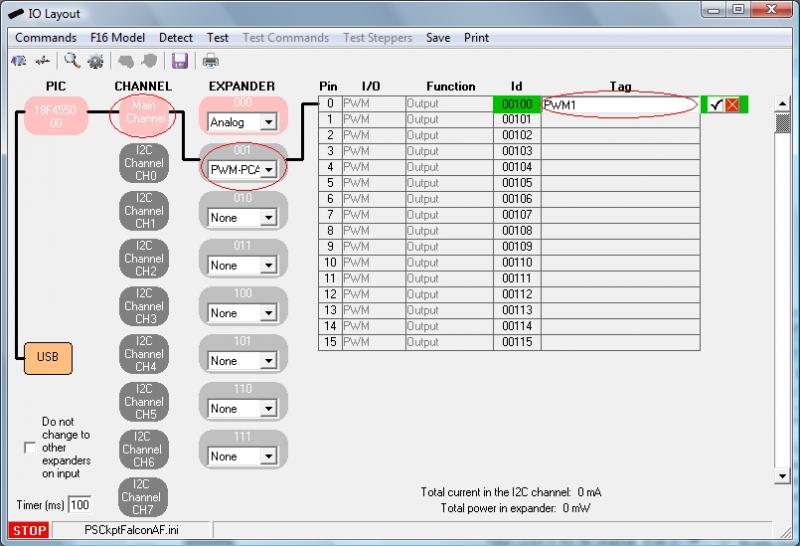
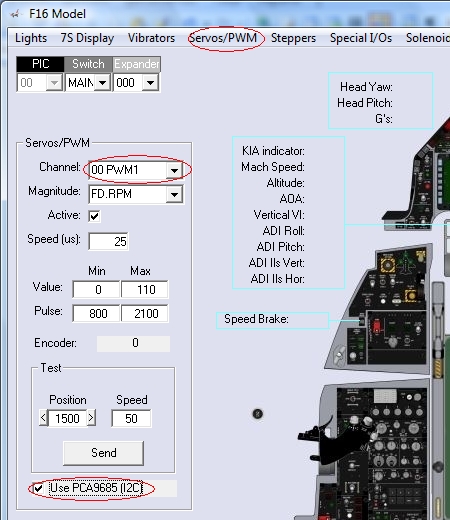

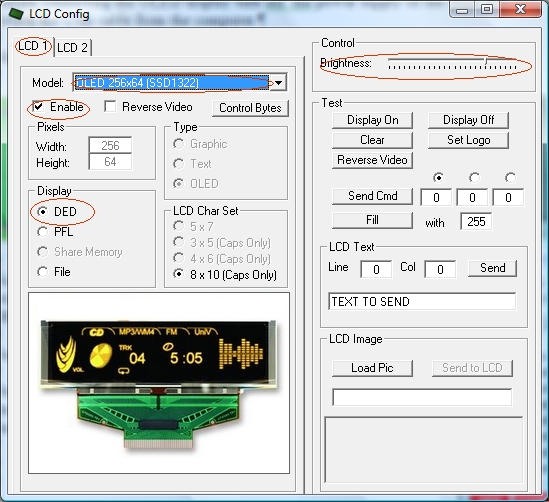





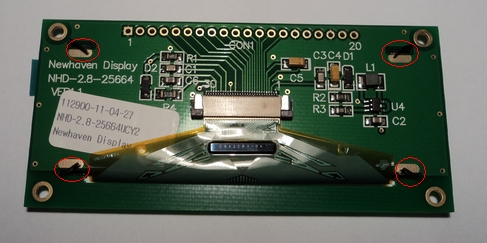

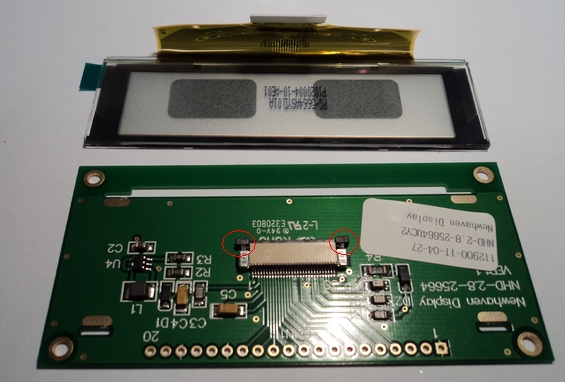
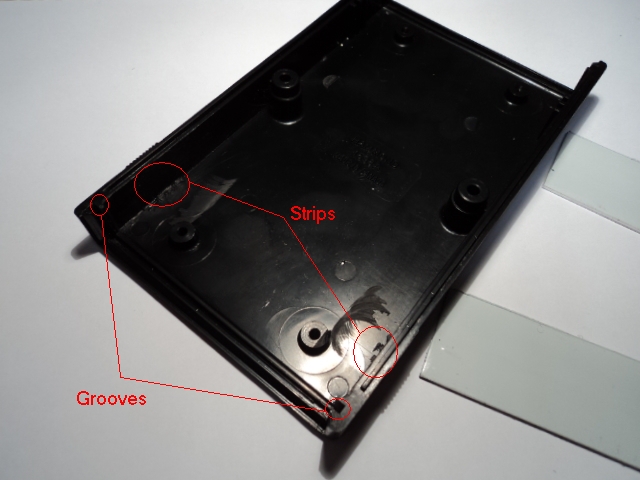
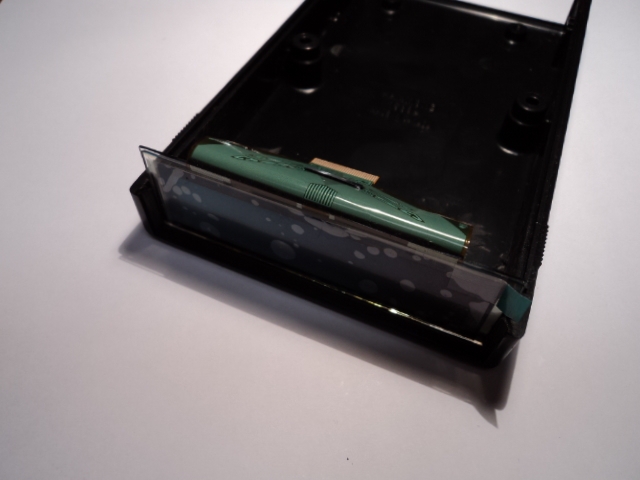

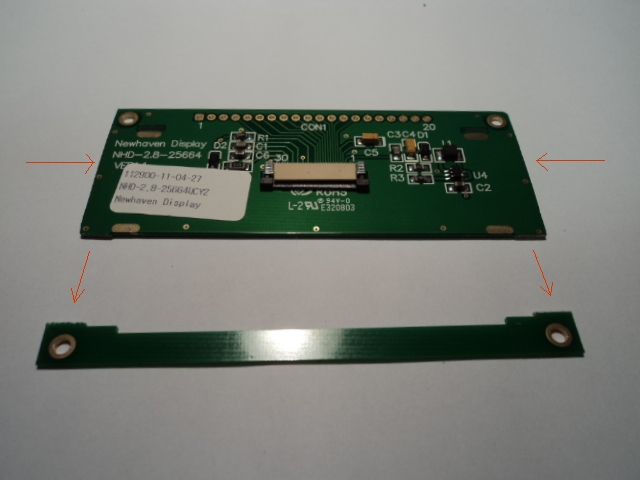
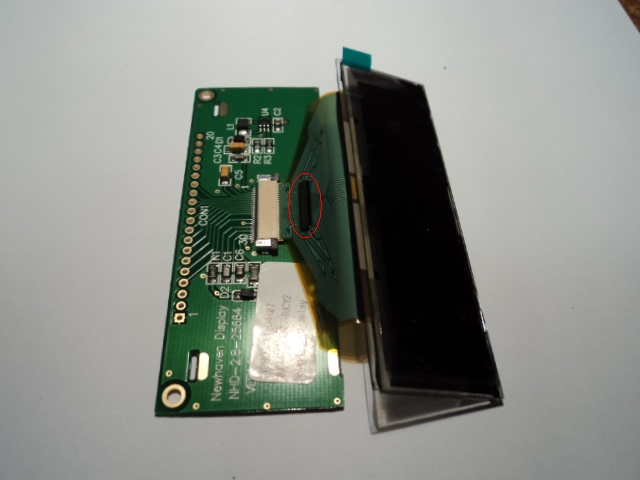
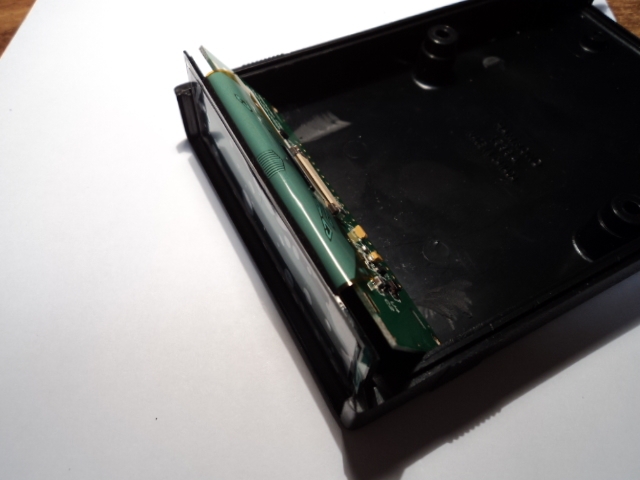

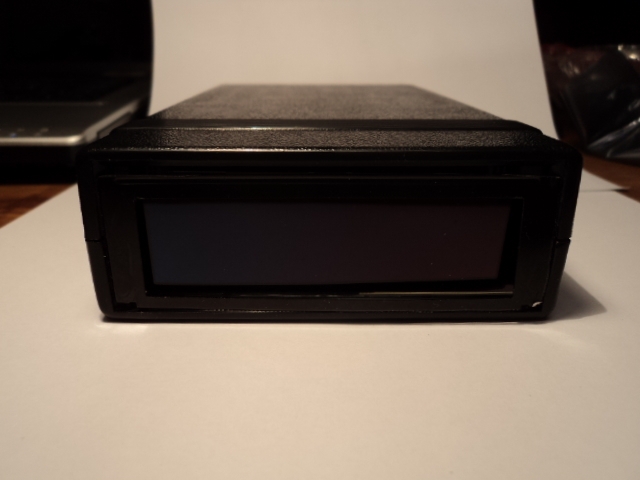

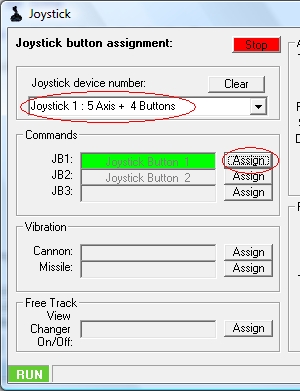
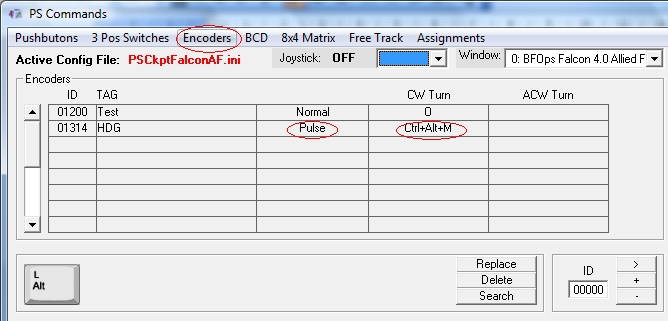
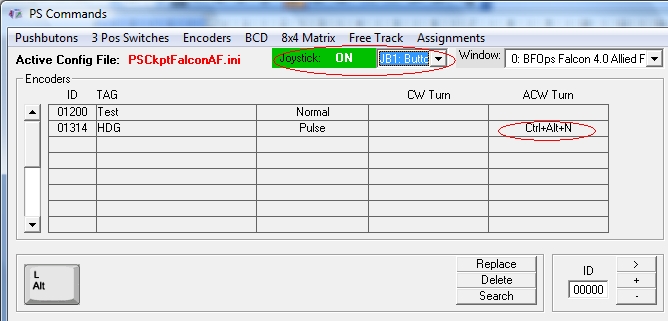
 Display driver for the 256x64 OLED driver already implemented:
Display driver for the 256x64 OLED driver already implemented: 